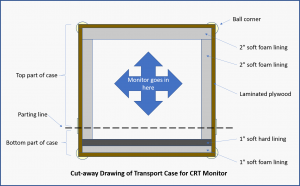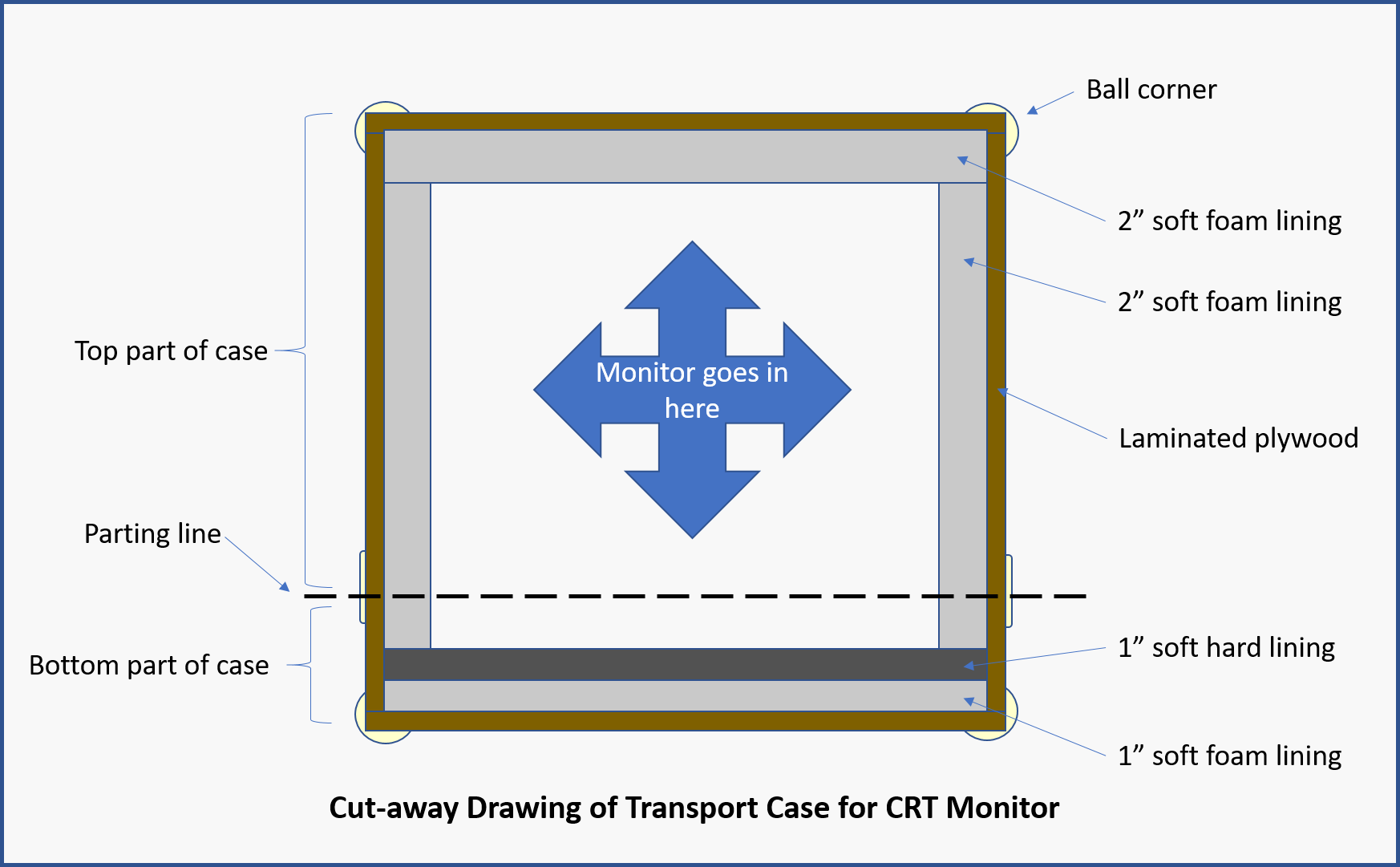
I was cleaning my desk today. As I was doing that task I was mumbling and grumbling about all the “technology stuff” that was in the way. Typically, I work with two computers, and sometimes three, cooking at any given moment. I have been known to have all four cranking away. My problem today was that the LCD monitor was in my way. I had to push it to one side then another.
Actually, that was not particularly difficult.
Consider that “back in the day” monitors were very heavy. I recall a client that needed to move an 18” monitor. Today, we’d say that would not be too difficult. But, when I was in the custom container business that monitor weighed in at a stunning 58 pounds! Oh, yes, the joys of the CRT.
The problem was that the client used that monitor at trade shows and it had to be shipped from headquarters to venue and back again. The solution was a special foam-lined box called an “ATA case”. The typical ATA case of the day had 2 inches of foam if it was being used for monitors. But, that could be a real problem.
Standard foam was 2-pound density. That is about the same as typical upholstery foam. However, if a loaded case gets bounced, or (heaven forbid) dropped, a 56-pound monitor will squish the foam and collide with the bottom of the case. The case bottoms and sides were plywood with a plastic laminate on the exterior. They are hard and can do real damage to a plastic monitor shell.
My solution to the problem was to use a double layer on the bottom. The lower layer of 2-pound foam was an inch thick. On top of that was another 1-inch layer of foam, but, this layer was denser 4-pound foam. While this foam provided excellent protection to the monitor, it also spread the weight out across a wider area. This meant a much-reduced chance of damage if the case and monitor got joggled.
Other methods of protecting the heavy monitors included increasing the thickness of the softer foam in the bottoms of the cases. While this works, to a degree, it also causes other problems. It turned out that after testing and important discovery was made. Much of the so-called “damage” to monitors and computers that occurred during shipping was nothing more than loose circuit boards. Bumping and joggling loosened the boards causing faulty connections. When too much soft foam is used in the bottom of a transport case the monitor suffers from both the initial shock and the micro-rebounds as the device bounces around. It is almost as if the soft foam acts like jelly.
As you might imagine, a 58-pound monster monitor could be a real terror if it was placed directly down into a foam-lined case. If you remember unpacking such a monitor from a cardboard box you know exactly what I mean. The solution was to make an “inverted” case. This design had a shallow bottom, only a few inched deep, and a large top. The monitor sat on the bottom and the rest of the box was lowered down over it. This was a very slick design.
The cases had heavy steel ball corners and extremely durable twist latches. Everything was riveted together. The accompanying cut-away diagram gives you an idea of the case design.
The case was made at the factory and shipped to the client. It worked perfectly, and that design became standard for the other monitor cases I designed. I even used this basic technique on a travel case for a giant robot.
Well, all that came to mind as I was cleaning off my desk. How about that
